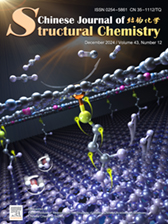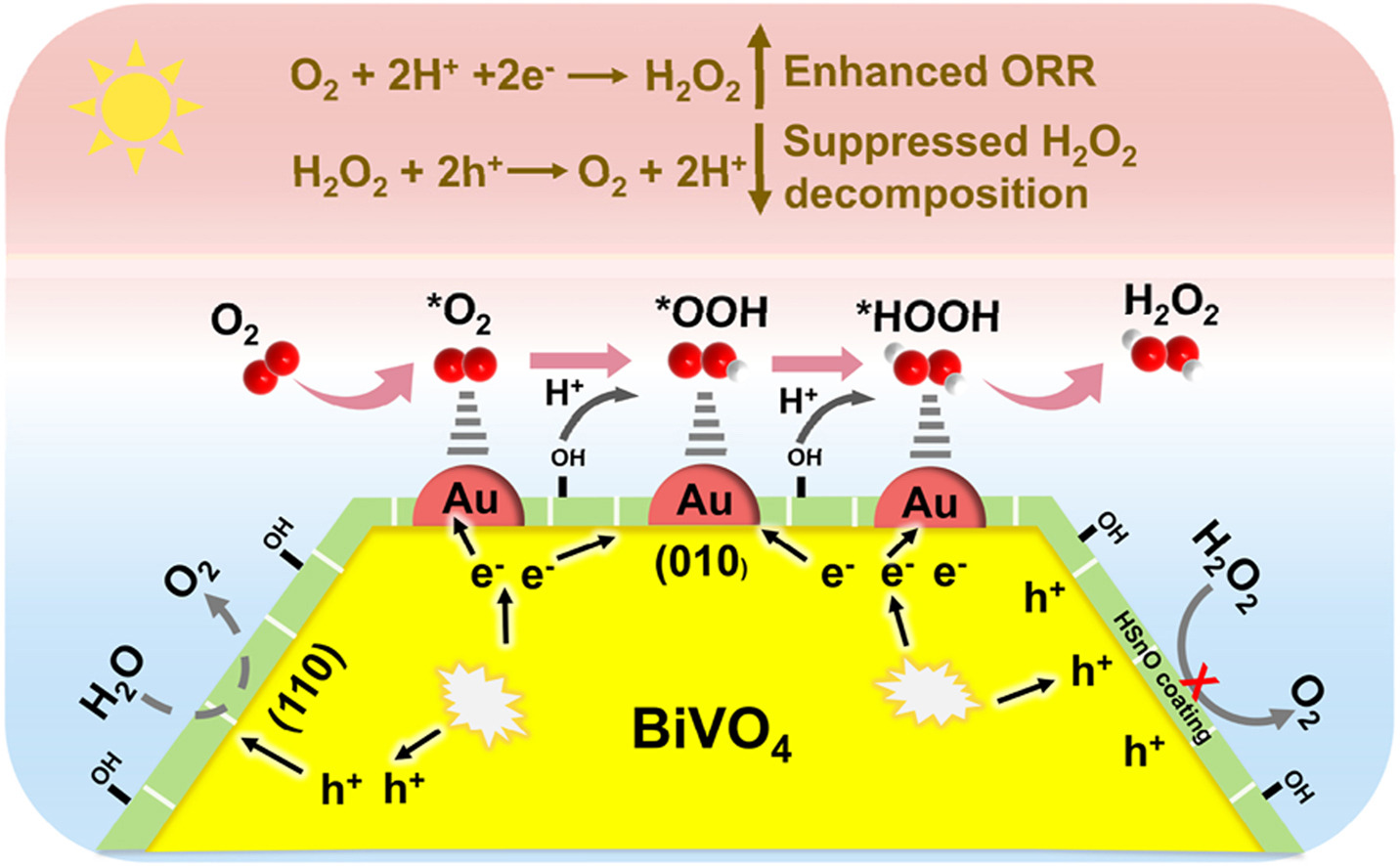
Alkyl-linked TiO2@COF heterostructure facilitating photocatalytic CO2 reduction by targeted electron transport
Jiangqi Ning, Junhan Huang, Yuhang Liu, Yanlei Chen, Qing Niu, Qingqing Lin, Yajun He, Zheyuan Liu, Yan Yu, Liuyi Li* Submit a Manuscript
Sikai Wu, Xuefei Wang*, Huogen Yu*
Chin. J. Struct. Chem., 2024, 43: 100457. DOI: 10.1016/j.cjsc.2024.100457
December 15, 2024
Photocatalytic H2O2 production; Surface coating; Hydrous tin dioxide; BiVO4
ABSTRACT
The rapid decomposition of H2O2 on the surface of inorganic photocatalyst (BiVO4) and insufficient proton supply from water leads to a low photosynthetic yield of H2O2. Herein, hydrous tin dioxide (HSnO) with massive hydroxyl groups is coated on the BiVO4 surface to greatly improve the photocatalytic H2O2 activity via simultaneous realization of providing sufficient protons and inhibiting H2O2 decomposition. After coating HSnO, Au nanoparticles as the O2-reduction active sites are selectively deposited on the (010) facet of BiVO4 to synthesize Au/BiVO4@HSnO photocatalyst. The resulting Au/BiVO4@HSnO photocatalyst exhibits excellent H2O2-production performance, in which the photogenerated H2O2 concentration (210.7 μmol L−1) is about 4.8 times higher than that of Au/BiVO4 after 2 h light irradiation in pure water. The outstanding photocatalytic performance can be attributed to simultaneous enhancement of H2O2 generation and the suppression of H2O2 decomposition by HSnO coating. Specifically, the HSnO coating with massive hydroxyl groups provides enough protons to promote the catalytic transformation of O2 into H2O2 on Au nanoparticles. More importantly, this coating not only allows water molecules to effectively permeate onto BiVO4 surface for rapid oxidation reaction, but also greatly inhibits the reverse reaction of H2O2 decomposition via decreasing its affinity with BiVO4 surface. This research offers new insights for boosting photocatalytic H2O2 production through surface coating strategy.






